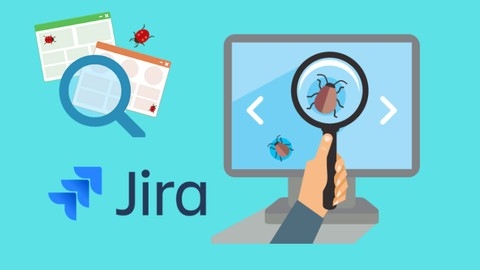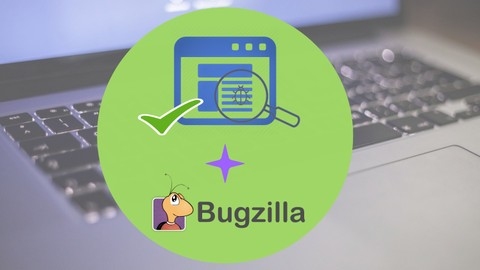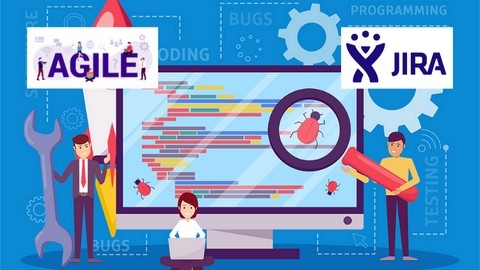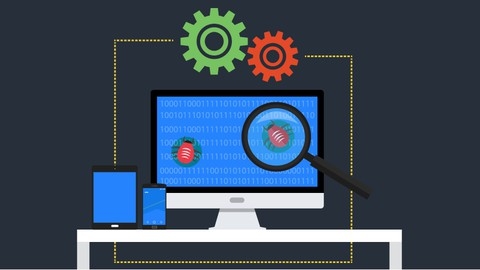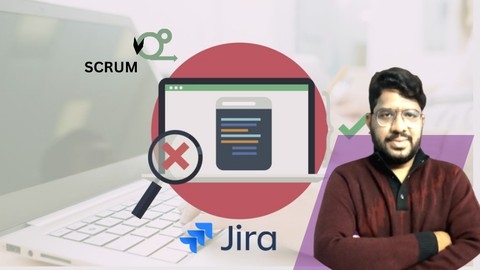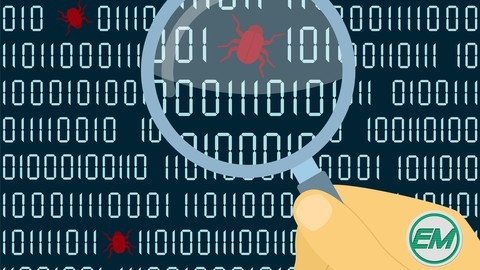Manual software testing is an essential part of the software development process, ensuring that applications meet quality standards and function as intended.
This crucial skill involves meticulously checking software functionality, usability, and performance, identifying and reporting defects to developers for resolution.
By mastering manual testing, you can contribute to the creation of reliable and user-friendly software, opening doors to exciting career opportunities in the tech industry.
Finding the right manual software testing course on Udemy can be challenging, with so many options available.
You’re looking for a comprehensive program that combines theoretical knowledge with practical experience, taught by instructors who can guide you through real-world scenarios.
For the best manual software testing course overall on Udemy, we recommend Learn Manual Software Testing + Agile with Jira Tool.
This comprehensive program goes beyond basic testing concepts, providing in-depth coverage of agile methodologies, hands-on experience with the widely used Jira tool for project management, and real-world project simulations.
This course is a great starting point for anyone who wants to build a strong foundation in manual software testing and prepare for a career in the field.
However, if you’re looking for something more specialized, or have specific learning goals in mind, we’ve got you covered.
Keep reading for our recommendations on the best courses for beginners, intermediate learners, and those seeking to specialize in specific areas of manual testing.
Learn Manual Software Testing + Agile with Jira Tool
The course starts by introducing you to software testing concepts like SDLC, verification vs validation, static and dynamic testing methodologies, testing levels, and types like GUI, usability, functional, and non-functional testing.
You’ll also learn testing terminology and design techniques.
Next, you’ll dive into the software testing life cycle, covering phases like planning, design, execution, and defect reporting.
This part is crucial as you’ll apply these concepts to a real e-commerce website project.
You’ll create test plans, scenarios, cases, a traceability matrix, set up the test environment, execute tests, and report defects.
The course then covers the agile testing process, which is becoming increasingly important.
You’ll learn agile terminology and how to use the popular Jira tool for project and test management.
With Jira, you’ll create projects, backlogs, epics, user stories, sprints, and bugs.
The Zephyr plugin will teach you test case creation, execution, importing, creating test cycles, and generating reports.
Manual Software Testing: Complete Course with Practical Labs
You’ll start by learning the fundamentals of software testing, including its importance, key concepts like static and dynamic testing, quality control, quality assurance, testing terminologies, types of testing, and testing principles.
The course provides a solid foundation by explaining what manual testing is, how it differs from automated testing, the tools used, and how you can learn it online.
One of the standout features of this course is its practical approach.
You’ll learn how to write industry-standard test cases for various applications, including web pages, mobile apps, and desktop software.
The instructor guides you through real-world examples, teaching you to consider assumptions, test criteria, steps, expected results, and actual results.
The course also introduces you to popular project management tools like Trello, Bugzilla, and Jira.
You’ll learn how to create accounts, log bugs, and work with these tools effectively.
Additionally, you’ll explore static review techniques and automation tools like Postman for API testing.
Interestingly, the course covers the Agile methodology, its 12 principles, and practical exercises, ensuring you’re well-versed in this widely adopted approach.
It also includes a section on top manual testing interview questions and answers, preparing you for job interviews.
Furthermore, you’ll gain insights into project planning, time management, resource management, budget management, and best practices for project management.
The course even touches upon the ISTQB certification, its eligibility criteria, syllabus, and levels, providing a pathway for professional growth.
As a bonus, the course offers a free section on OpenAI and ChatGPT, exploring their applications, features, and potential in manual software testing.
You’ll learn how to leverage AI for tasks like test case generation, test data preparation, and defect reporting.
Throughout the course, you’ll find quizzes and multiple-choice questions to reinforce your understanding of the key concepts.
Best QA Manual Software Testing: Live Project+Agile+Jira+API
This course starts by explaining the roles and responsibilities within a QA team, giving you an understanding of how testers fit into the broader software development process.
You’ll learn about two major methodologies for developing software - Agile and Waterfall.
The course emphasizes the increasingly popular Agile approach and how it differs from the traditional Waterfall model.
A key focus is on using Jira, a widely-adopted tool for managing Agile projects.
You’ll install Jira and learn how to create user stories, epics, and defects within it.
This hands-on experience with Jira will be invaluable for transitioning into an Agile team.
The course walks you through a real-world project from start to finish.
You’ll analyze requirements, create test plans and test cases, then perform functional and UI testing on a live application.
This practical experience is supplemented with concepts like boundary value analysis and equivalence partitioning.
As you find defects during testing, you’ll practice writing clear defect reports and understand the defect lifecycle.
The course covers different testing types like integration, regression, and user acceptance testing.
You’ll also learn about environments like dev, staging, and production, as well as the release process.
To prepare for interviews, there are lectures on common questions and sample resumes.
Finally, an entire section is dedicated to API testing - covering API types, how to test APIs, and working through real examples step-by-step.
Basic Manual Software Testing +Agile+Bugzilla for beginners
You’ll start by understanding the importance of software testing and quality assurance, including real-world examples of bugs that caused major issues in the past.
This sets the stage for appreciating the critical role of a QA tester.
Next, you’ll dive into the different types of testing processes - manual and automation testing.
The course clearly explains the distinction between these two approaches, equipping you with a solid understanding of when to use each.
One of the key areas covered is the skillset and roles of a QA tester.
You’ll learn about the essential skills required and the responsibilities you’ll take on as a manual tester.
The course then provides a thorough introduction to the Software Development Life Cycle (SDLC), including the various types of software, development models like Waterfall and Agile, and the intricate details of each phase.
As you progress, you’ll explore different testing techniques, such as boundary value analysis, equivalence class partitioning, and decision table testing.
These techniques will teach you how to derive effective test cases and test data.
The course also covers non-functional testing, an often overlooked but crucial aspect of software testing.
You’ll learn about performance, security, and other non-functional testing types.
Importantly, you’ll gain hands-on experience in writing test cases for various applications, including a banking application.
This practical experience will be invaluable as you prepare for real-world testing scenarios.
Bug reporting and the bug life cycle are also covered in-depth, ensuring you understand how to effectively report and track bugs.
Additionally, the course introduces you to Agile methodologies like Scrum, teaching you about user stories, sprints, and other Agile concepts.
You’ll even get to work with tools like JIRA and Bugzilla, which are widely used in the industry.
Throughout the course, you’ll have opportunities to test your knowledge with quizzes and a comprehensive final exam covering manual testing, Scrum, and interview questions.
Specialize in QA Manual Testing with Live Project+AGILE+JIRA
The course starts with an introduction to software testing, covering key concepts like testing objectives, principles, and common terminology.
You’ll learn about different types of testing, including functional, non-functional, and user acceptance testing.
The course then dives into the various stages of the testing life cycle, from requirement analysis and test planning to test execution, defect reporting, and test closure.
You’ll get hands-on experience creating test plans, designing test cases using techniques like equivalence partitioning and boundary value analysis, and setting up test environments.
One of the highlights is the practical project where you’ll simulate a real-world testing scenario using a test management tool and JIRA for defect management.
This will give you a taste of what it’s like to work as a tester in an organization, collaborating with different teams and following the testing process from start to finish.
The course also covers agile testing methodologies and provides an overview of automation testing, although the focus is primarily on manual testing.
Additionally, there’s a section dedicated to interview and resume preparation, which can be invaluable for those seeking QA testing roles.
Throughout the course, you’ll have opportunities to apply what you’ve learned through practical exercises, such as writing test cases for Amazon and creating test execution reports.
This hands-on approach can help reinforce the concepts and better prepare you for real-world testing scenarios.
With its combination of lectures, practical exercises, and a simulated project, you can gain a well-rounded understanding of the testing process and develop the skills needed for a career in QA testing.
Quality Assurance Mastery - Manual Software Testing
You’ll start with an introduction to the role of a Quality Assurance Engineer and the Software Development Life Cycle (SDLC).
The course covers essential concepts like Agile Methodology, SCRUM team roles and responsibilities, and different types of testing.
You’ll learn what a bug is and how to create effective test cases.
The course dives into various testing techniques, including Black Box Testing, White Box Testing, Cross Browser Testing, and User Acceptance Testing (UAT).
It also introduces you to JIRA, a popular bug tracking tool.
The course doesn’t stop there.
You’ll explore Regression Testing and Exploratory Testing, two crucial aspects of manual testing.
Additionally, you’ll understand the difference between Volume Testing and Load Testing, and when it’s appropriate to automate testing.
To prepare you for your first QA job, the course includes a section on interview questions.
You’ll also find valuable information on QA salaries, including an updated lecture on the latest salary trends for QA Engineers in November 2023.
Interestingly, the course also covers how you can make money by testing websites.
This could be a great opportunity for you to gain practical experience while earning some extra income.
SOFTWARE TESTING MASTERCLASS-2023-JIRA | AGILE | API Testing
The course starts with the basics, explaining what software testing is and the role of a tester or QA professional.
You’ll learn the difference between products and projects, manual and automation testing, and various types of applications like web-based, window-based, and client-server.
One of the key areas covered is understanding and working with bugs or defects.
You’ll dive into the bug life cycle, learning about the different stages a bug goes through from identification to resolution.
This knowledge is crucial for effective bug reporting and management.
The course then delves into various types of testing that every tester should be familiar with, such as functional, GUI, usability, compatibility, and configuration testing.
You’ll also learn about browser compatibility testing, which is essential for ensuring your applications work seamlessly across different browsers.
Practical aspects of the testing process are covered in detail, including how to report a new defect in JIRA, set priorities and severities, and perform retesting and regression testing.
You’ll even set up your own JIRA account for hands-on practice.
Test case design is a critical skill for any tester, and this course covers it thoroughly.
You’ll learn what a test case is, best practices for writing them, and different test case design techniques like Boundary Value Analysis (BVA), Equivalence Class Partitioning (ECP), and experienced-based techniques.
Performance testing is another important topic, where you’ll learn about load, stress, and volume testing to ensure your applications can handle high traffic and heavy usage.
For those interested in agile methodologies, the course covers the agile model, including the difference between use cases and test scenarios, and an end-to-end understanding of the Scrum model.
Mobile application testing is also covered, with an introduction to different types of mobile apps and how to install native applications on iOS devices.
The course provides a deep dive into JIRA, a popular bug reporting and management tool.
You’ll learn how to set up JIRA, report defects, search and update defect information, add comments and labels, define components, set up dashboards and workflows, and understand the bug life cycle for valid and invalid defects.
For those interested in database testing, the course includes a section on SQL for software testers.
You’ll learn how to set up a database environment, execute SQL queries, and work with various SQL commands like SELECT, DELETE, JOINS, CREATE TABLE, INSERT, UPDATE, VIEWS, INDEXES, and CONSTRAINTS.
Unix/Linux commands are also covered, as they are essential for many testing tasks.
You’ll learn about the basic commands, working with directories and files, and how to check file contents using commands like CAT, HEAD, TAIL, MORE, and LESS.
Finally, the course introduces you to APIs and web services, covering the differences between web-based applications, web services, and APIs.
You’ll learn about microservices and how to use Postman for API testing, including sending GET, POST, PUT, and DELETE requests.
Complete Manual Software Testing 2023 + Agile+ Scrum + Jira
You’ll start by understanding the basics of software testing, including its importance and the role of a tester.
The course then dives into the key skill sets required for manual testers, such as writing test cases, creating test scenarios, and reporting bugs effectively.
One of the course’s strengths is its in-depth coverage of the Software Development Life Cycle (SDLC).
You’ll learn about different types of software, SDLC models like Waterfall and V-Model, and the testing phases within the SDLC.
This knowledge is crucial for understanding the testing process within the broader context of software development.
The course also covers various testing techniques, including functional and non-functional testing approaches.
You’ll learn about different types of testing, such as sanity, smoke, ad-hoc, localization, and exploratory testing.
Additionally, you’ll dive into re-testing and regression testing, which are essential for ensuring software quality.
A significant portion of the course is dedicated to black box testing techniques, including boundary value analysis and equivalence class partitioning.
These techniques will help you derive effective test data and write comprehensive test cases.
Writing test cases is a critical skill for manual testers, and the course provides extensive hands-on practice.
You’ll learn how to write test cases for various applications, including a user registration form and a banking application.
The course also covers test scenarios and the use of a requirement traceability matrix (RTM).
Bug reporting and the bug life cycle are other important topics covered in the course.
You’ll learn how to write proper bug reports, understand priority and severity levels, and gain insights into the bug reporting process.
The course also introduces you to agile development processes and scrum methodologies, which are widely used in modern software development.
You’ll learn about user stories, epics, and scrum ceremonies, providing you with a solid foundation in agile testing practices.
Additionally, the course includes sections on JIRA, a popular issue tracking and project management tool used by many software teams.
You’ll learn how to use JIRA as a tester, making you more valuable to potential employers.
As a bonus, the course covers Bugzilla, a defect reporting tool, giving you hands-on experience with bug tracking software.
Manual Testing Crash Course for Software Testers
The course starts by introducing you to the world of software testing.
You’ll learn about different types of applications that need testing, like web apps, mobile apps, and desktop software.
This lays the foundation for understanding the various levels of testing, from unit testing to system testing.
But it doesn’t stop there.
The course dives into the different types of mandatory testing that every software project requires, such as functional testing, usability testing, and security testing.
You’ll also learn about the bug life cycle, which is crucial for effective bug tracking and resolution.
Throughout the course, you’ll gain a solid understanding of key concepts like software testing, applications, levels of testing, mandatory testing, and the bug life cycle.
These are essential topics for anyone interested in pursuing a career in manual testing or improving their existing skills.
Software Testing : Learn Manual/QA Testing + ISTQB CTFL Help
You will start by learning about the importance of software testing and the different career paths available in this industry.
The course covers the fundamentals of testing, including testing principles, myths, and key terminology.
Next, you’ll dive into various software development models, such as the Waterfall and Agile Scrum models, to understand how testing fits into the development lifecycle.
The course then explores different forms of testing, including static testing techniques like code reviews and walkthroughs, as well as dynamic testing approaches like black-box, white-box, and gray-box testing.
You’ll also learn about specific techniques like equivalence partitioning and boundary value analysis.
The course covers the different levels of testing, from unit testing to system testing, alpha testing, and beta testing.
You’ll learn about functional testing types, such as smoke testing, sanity testing, and regression testing, as well as non-functional testing.
The software test life cycle is covered in detail, including test planning, test design, requirements traceability matrix, test execution, and test result reporting.
The course also delves into defect management, covering the defect life cycle and how to log defects using tools like Bugzilla.
Test automation is another important topic covered, including the basics of automation, its benefits, and the process of automating tests.
Additionally, the course includes bonus sections on career guidance, with interview questions and essential skills for software testers.
There is also a section dedicated to helping you prepare for the ISTQB Certified Tester Foundation Level (CTFL) exam, including quizzes and solutions.
